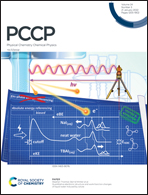Investigation into the performance decay of proton-exchange membranes based on sulfonated heterocyclic poly(aryl ether ketone)s in Fenton's reagent†
Abstract
Sulfonated N-heterocyclic poly(aryl ether) proton-exchange membranes have potential applications in the fuel-cell field due to their favorable proton conduction capacity and stability. This paper investigates the changes in mass and performance decay, such as proton conduction and mechanical strength, of sulfonated poly(ether ether ketone)s (SPEEKs) and three sulfonated N-heterocyclic poly(aryl ether ketone) (SPPEK, SPBPEK-P-8, and SPPEKK-P) membranes in Fenton's oxidative experiment. The SPEEK membrane exhibited the worst oxidative stability. The oxidative stability of the SPPEK membrane is enhanced due to the introduction of phthalazinone units in the chains. The SPPEKK-P and SPBPEK-P-8 membranes exhibit better radical tolerance than the SPPEK membrane, with proton conductivity retention rates of 66% and 73% for 1 h oxidative treatment, respectively. In addition, the molecular chains of SPPEKK-P and SPBPEK-P-8 exhibit relatively little disruption. The pendant benzenesulfonic groups enhance the steric effects for reducing radical attacks on the ether bonds and reduce the hydration of molecular chains. The introduction of phthalazinone units decreases the rupture points in the main chain. Therefore, the radical tolerance of the membranes is improved. These results provide a reference for the design of highly stable sulfonated heterocyclic poly(aryl ether) membranes.



 Please wait while we load your content...
Please wait while we load your content...